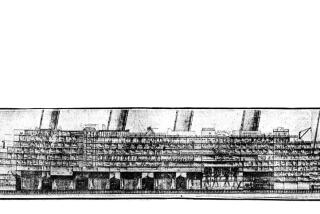$150 for $1.50 Worth of Perfume
HOW MUCH DOES a perfume really cost? That’s everybody’s question when they see a $350 price tag on a bottle of Bijan or one for $250 on Joy. Does it really have to cost so much? Nobody who markets perfume will tell you exactly, but by asking the right questions of the right people, you can get an idea.
Consider first the amber liquid that smells--the “juice,” as it is known in the trade. Without a winning compound, as Giorgio’s Michael Gould says, “You can have the most beautiful bottle and box in the world and the product won’t sell. If the juice isn’t right, long term you won’t have a franchise.”
So perfume makers rarely spare the expense when formulating a prestige fragrance. If it takes 692 ingredients to make it work, as in Giorgio’s new Red, then so be it. But, according to one Los Angeles fragrance expert, even the most expensive ingredients in the world--such as pure jasmine and attar of rose--do not raise the price to three figures. The ingredients in the average bottle of prestige perfume cost about $1.20 to $1.50. The actual liquid in a typical bottle of $150 perfume is less than 1% of the retail cost.
The bottle, box and and display carton typically cost four to six times times more than the fragrance itself. Manufacturers pay premium prices for special stoppers, sometimes as much as for the bottle. They also pay for decorating the bottle and for filling, shipping and packing it. All these extraneous costs might bring the cost of a filled bottle to about $20. Consider shrinkage and product overruns and add 50 cents.
But the costs keep mounting. Those women in the stores who spritz. The salespeople behind the counter. Their salaries are augmented by the fragrance companies. The salespeople get a commission on every bottle they sell. The companies also provide the tester samples.
Then consider the advertising costs. It costs about $31,200 to buy one page of advertising in Vogue magazine. Few prestige perfumes are advertised in only one publication each month. And scented strips increase the production costs of each ad.
During the research and development stages, high-salaried executives work full tilt to formulate the scent, the marketing strategies and the advertising campaigns. Consultants’ salaries may exceed $100,000. Some of the world’s finest bottle designers charge more than $100,000 for their work. Don’t forget the support staffs that keep companies rolling. Department stores typically mark up the product from 60% to 100%.
Spoiled’s Herb Fink and Lee Bronson say they spent just less than $500,000 to get their perfume into the department stores, even before the first sale. Fragrance marketing experts David Horner and James Roth Jr. recall that less than $300,000 was invested in Giorgio 10 years ago (“not counting the party,” Horner says, “but you really don’t need (a pricey launching) party”). But that was low budget for a scent that eventually hit $100 million in sales. Industry sources say Elizabeth Taylor’s Passion cost about $10 million to $15 million. Estimates are that Calvin Klein spent $4 million to $6 million to advertise his new scent Eternity.
Most experts agree that the profit margin on a $150 bottle of perfume is low, when all costs are taken into consideration. Higher profits come from sales of colognes whose ingredients, bottling and packaging costs is about half as much as those of perfumes. And far more bottles are sold; according to industry sources, cologne accounts for at least 65% of most fragrance firms’ sales.




